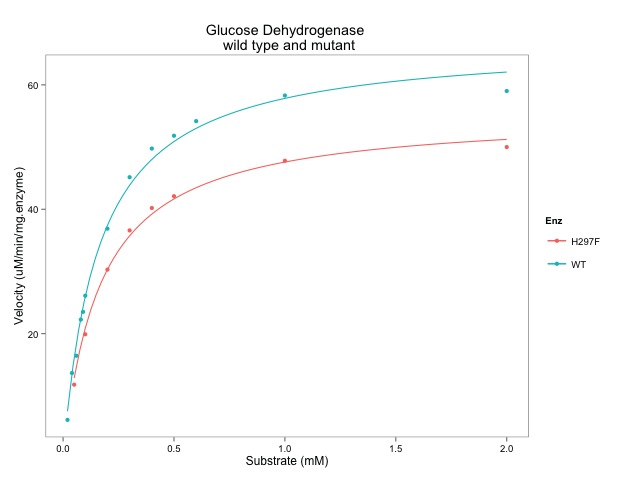Here is my word cloud which shows who and what I tweet about:
 |
| What I tweet about: too much bread and not enough work? |
Below is the script that I used to make the word cloud. It also shows how the word cloud developed - I removed various words that I didn't think were useful. I did this by using the text mining package - tm. I looked at word frequencies and removed the words I didn't like using the tm.map() function.
SCRIPT START:
# if required install.packages(c("wordcloud", "tm", "ggplot2", "RCurl"))
library("wordcloud")
library("tm")
library("ggplot2")
library("RCurl")
x <- getURL("https://raw.githubusercontent.com/brennanpincardiff/RforBiochemists/master/data/tweets.csv")
twts <- read.csv(text = x)
str(twts)
# it's a data.frame
text <- twts$text # pull out the text...
str(text) # check the structure
# factor - no I dont' think that's quite what we want...
text <- as.character(twts$text)
str(text)
# so that worked and looks better
# check a few of the entries...
text[1]
text[2]
text[10]
# defaults are not great - quite slow and probably too many words to be useful.
# best to add a max.words modifier....
wordcloud(text, max.words = 35)
wordcloud(text,
max.words = 35,
random.order=FALSE,
rot.per=0.35,
use.r.layout=FALSE,
colors=brewer.pal(8, "Dark2"))
 |
| Add some colour and get a nice layout... |
# layout is random...
# some interesting words here
# my name: brennanpcardiff
# some people I communicate with on twitter: amcunningham, drbillyo, drnostromo
# words like amp, just, the, think, well, day, now, nice, great, new
# good to do some processing....
# convert into a Corpus - a structure for organising text...
text.c <- Corpus(VectorSource(text))
text.c.p <- tm_map(text.c, content_transformer(tolower))
# remove stopwords
text.c.p <- tm_map(text.c.p, removeWords, stopwords("english"))
# get a list of Englisth stopwords....
stopwords(kind = "en")
length(stopwords(kind = "en"))
wordcloud(text.c.p, max.words = 35, colors=brewer.pal(8, "Dark2"))
 |
| Not quite what I wanted.... |
# so some words removed but leaving others... including smiley face.
# remove some Punctuation
text.c.p <- tm_map(text.c.p, removePunctuation)
wordcloud(text.c.p, max.words = 35, colors=brewer.pal(8, "Dark2"))
# better... rstats has appeared - good to see.
# not sure how useful day, the, can, well, like, http are....
# remove more words
text.c.p <- tm_map(text.c.p, removeWords, c("new", "the", "today", "can","just", "day", "amp", "http", "good", "great", "like", "nice", "well", "brennanpcardiff", "will", "now", "httpt", "get", "one"))
set.seed(501)
wordcloud(text.c.p,
max.words = 30,
random.order=FALSE,
rot.per=0.35,
use.r.layout=FALSE,
colors=brewer.pal(8, "Dark2"))
# for more on word frequencies and a graph.......
# create Document Term Matrix
dtm <- DocumentTermMatrix(text.c.p)
inspect(dtm)
dim(dtm)
# Plotting Word Frequencies
freq <- sort(colSums(as.matrix(dtm)), decreasing = TRUE)
head(freq, 14)
# make the data frame for ggplot
wf <- data.frame(word = names(freq), freq = freq)
head(wf,20)
wf.freq <- subset(wf, freq > 35) # data frame with abundant words - 23 words
p <- ggplot(wf.freq, aes(word, freq)) +
geom_bar(stat="identity") +
xlab("Frequent words") + # label x-axis
ylab("Frequency") + # label y-axis
ggtitle("Word Frequencies in my tweets") +
theme_bw() +
theme(axis.text.x = element_text(angle=45, hjust=1))
p # show the object...
# make another wordle with the frequencies... gives the same plot...
set.seed(501) # gives a reproducible plot...
wordcloud(names(freq), freq, max.words =30,
random.order=FALSE,
rot.per=0.35,
use.r.layout=FALSE,
colors=brewer.pal(8, "Dark2"))
Helpful resources that I used:
- I learned how to this first from here: https://georeferenced.wordpress.com/2013/01/15/rwordcloud/
- http://stackoverflow.com/questions/18446408/adding-stopwords-in-r-tm
- Introduction to the text mining (tm) package
- More articles on R-bloggers about word clouds (including a plea not to use them!)








No comments:
Post a Comment
Comments and suggestions are welcome.